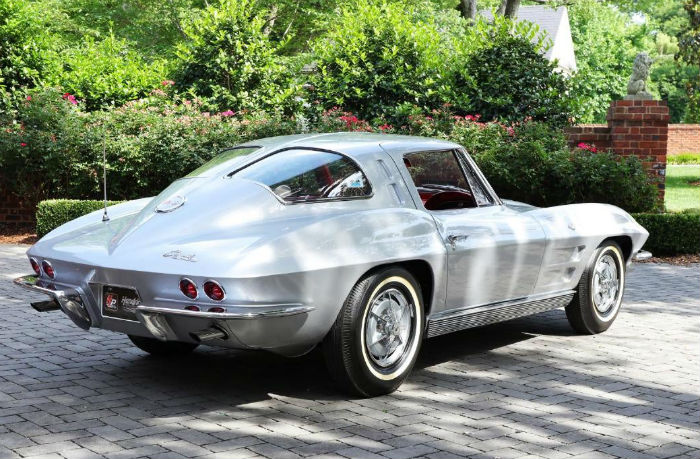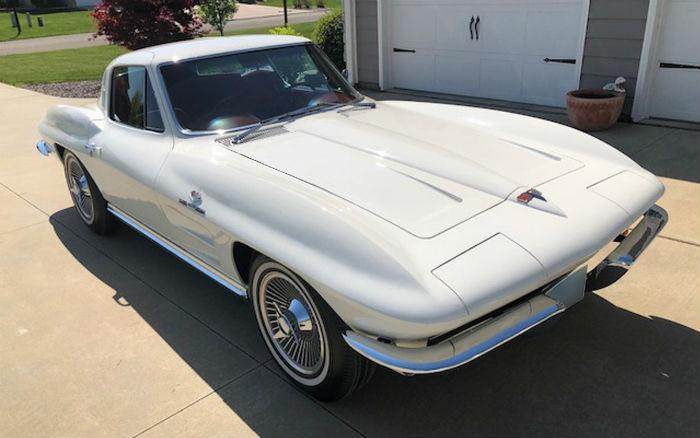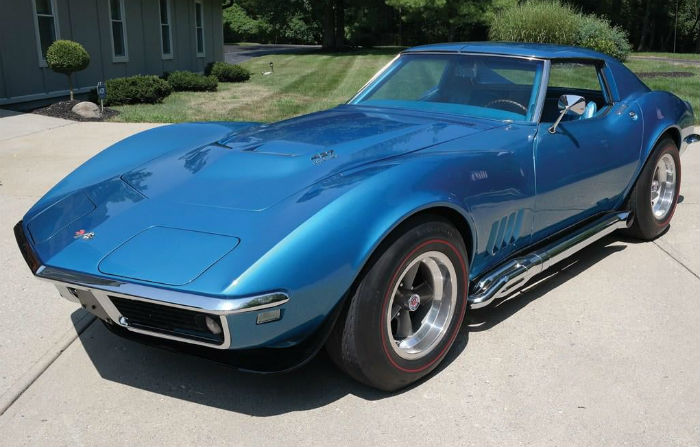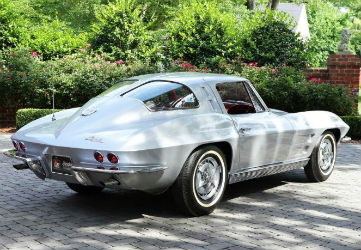
NEW YORK – Ever since the prototype of the 1959 Corvette Stingray raced at the Marlboro Motor Raceway in Maryland that April, finishing first in its class and fourth overall, the Stingray has been one of America’s most beloved sports cars with a loyal following.
That racer model, driven by Dick Thompson, aka “The Flying Dentist,” was a major influence on the design of the 1963-67 second-generation Corvette models, which were named Sting Ray (spelled with two words). The nameplate would revert to the one-word spelling in 1969. Stingrays were a popular model until 1976. The Stingray name was brought back as the base model for the seventh-generation Corvettes starting in 2014, and the 60th-anniversary Stingray edition for 2020 was released in the summer of 2019.
Car collecting is highly individual and there are fans for nearly every make and model available, but the Stingray has legions of fans infatuated with these high-performance cars. In the Corvette lineup, perhaps no other model gets collectors’ engines racing quite like the Stingray does.
“The Sting Ray Corvette debuted in 1963 with the unique split-window coupe, a one-year-only styling exercise, which, unfortunately, severely limited rear visibility, and was discontinued for the rest of the generation, that is until the 1967 model,” said Catalin “Ken” Mihai, president and CEO of www.TheVetteNet.com. “Offered as coupes and as convertibles, the 1963 to 1967 Corvettes, quickly became popular and were dominating the racetracks on Sundays. The mantra at that time was ‘From the showroom to the track’ due to so many horsepower ratings to satisfy every whim.”

The second-generation Stingrays, dubbed the “mid-years” model, led to years of refinement, giving way to the third generation of the Corvette Stingray model. “Besides the name (and the frame), this new generation came up with a totally redesigned body which proved more aerodynamic, all the while looking like a sculpture in motion,” Mihai said. “The long curves, the vents, the chrome bumpers, the removable tops and rear window and the huge combinations of cubic inches and HP outputs, made these models very popular then, also, today being one of the most coveted.”
While collecting started peaking with the 1968 models, today’s collectors are really after the 1969 model as the most representative of the “Bumper Cars” era (steel chrome bumpers in the front and rear), he said. That era lasted until 1972.

Among several Corvette collectors clubs with an online presence (helpful to new collectors] is the National Corvette Owners Association, which posted an article talking about the 1972 hard-top sport coupe. “Corvette drivers liked the convenience of a closed car. Maybe that’s one reason why America’s favorite sports car survived when lower-rung British sports cars started to disappear,” the association said, noting customers were happy to fork over the $5,533 then for this car to get the features they liked.
The next model year, 1973, saw the automaker succumb from the pressure to make cars cheaper to repair with the Stingray losing its front chrome bumper, making a one-off kind of odd model, Mihai said. “The next model year, 1974, had both front and rear bumpers made out of polyurethane, which together with the severe restrictions of the output, started a sad time for the Corvette hobby. Can you imagine that the 1975 base 350 engine was rated at only 165 horsepower?”

While the 1975 to 1977 models still embodied fine design and were made in large numbers, they were not as valued for collectibility and performance, Mihai said. “The good news is that there are signs that, due to their wide availability and low prices, a new generation of young buyers is becoming interested in them,” Mihai said. “A new redesign happened with the 1978 model, when it got a sloping fast back look and the HP starting to creep up a little bit, but it was still pretty modest. The 1979 model was the highest production ever for a Corvette with 53,807 leaving the factory in St. Louis, Missouri.”
The Stingray, particularly the 1963-1982 models, has earned its rightful place in automobile history. “It was an era of daring innovation, exuberant horsepower and frivolity which is still felt today when they are the most sought after by all sorts of hobbyists,” Mihai said.

The Stingray can always be counted on to make an appearance at major auto auctions and car shows. At the Chattanooga Motorcar Festival in October 2019, the National Corvette Museum displayed from its collection a 1959 Corvette Stingray racer prototype, a 2009 Centennial Concept Corvette (‘Sideswipe’ from one of the Transformers movies) and a 2020 Stingray Eighth Generation Corvette.
Those who collect Corvettes have myriad options in color, features and price points when it comes to the Stingray. And while some collectors do keep them in a barn or a garage, there are few things that compare to the joy of tooling down the highway in a vintage Stingray. Many collectors buy them for regular use, be it driving to a car show, around town or a Sunday outing for ice cream. After all, cars are meant to be driven.


